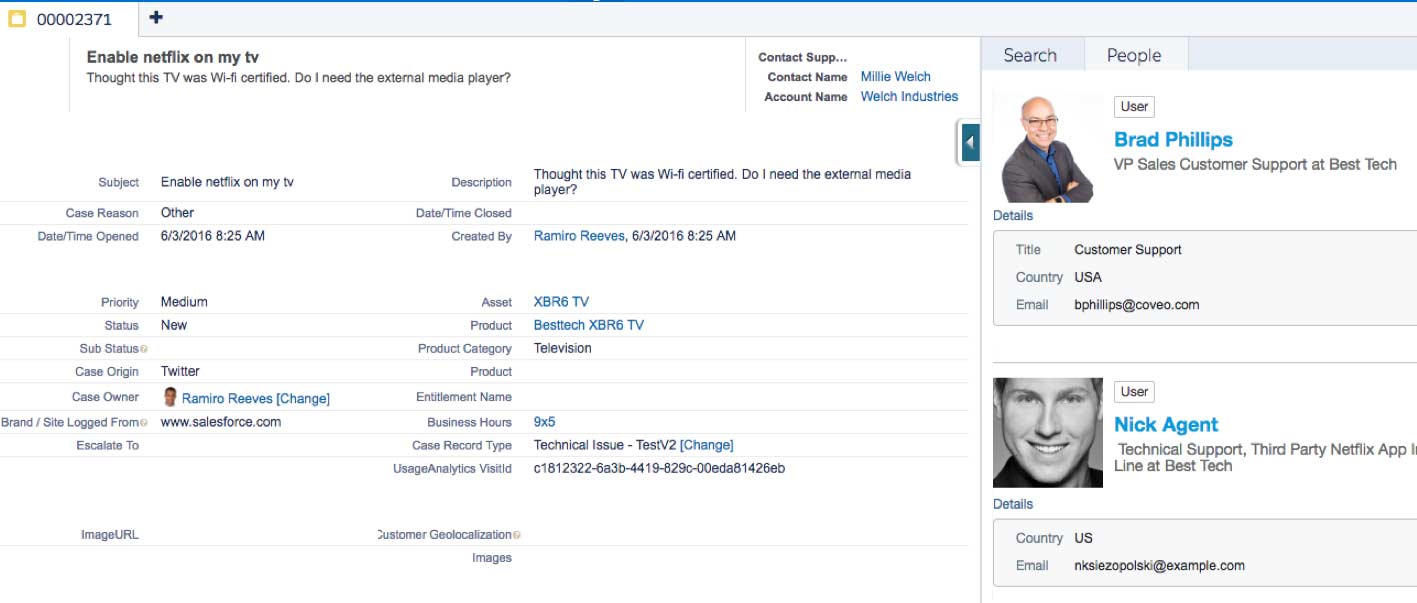“Knowledge management isn’t just the know how, but also the know who.” Excellent perspective from a former co-worker of mine. And while most organizations are getting better at surfacing their “know how” content with technologies like enterprise search, many still struggle with how to identify who knows what. In this post, we’ll look at how to automatically identify and leverage expertise within your organization.
KM 2.0 Framework
I first started thinking about this topic in 2006 when a group of us at the consulting firm eVergance started to design a new, “KM 2.0 framework.” The idea was to expand the definition of “Knowledge Management” beyond traditional content.
We inventoried a list of technologies that were heavily utilized by users yet under-leveraged (or even ignored) by existing KM systems. Collaboration platforms like email and instant messenger facilitating a lot of knowledge exchange but weren’t easily searchable and often couldn’t convert their threads into formal documentation. We designed integrations for indexing these systems while also creating a mechanism by which our new KM framework could identify a user’s preferred channel and determine their average response time per channel (more on this point later).
We then realized that the same metadata being indexed could also help with expertise identification. If “Jane Doe” closed cases, authored KCS articles, or participated in wiki/forum threads tagged to a concept like “virtual machine,” then perhaps she was a VM expert. We created a points-based system similar to gamification such that closing a case on a particular topic is worth 10 points, authoring a new article is 5 points, having another user rate that article 4-stars or above is another 1 point, participating in an email/forum/IM thread is 2 points, etc. Of course, the exact actions and points would be configurable by each organization. But instead of rewarding users for their actions (which could also happen), we were deducing expertise based on the total number of points a user is assigned for a given topic. When we combined this concept with the automatic tagging capabilities of search engines that support NLP, ontologies, and text analytics, even unstructured content like email and IM threads could now start deducing expertise.
Finally, and this was my favorite part, we recognized that content and expertise exists both inside and outside of the organization (even if some of our clients refused to acknowledge this). So we designed mechanisms for doing all of the above on third-party user communities and websites.
The Service and Support Professionals Association (now the TSIA) soon recognized this innovative new approach to KM at their Spring 2007 conference where I provided the following demonstration:
Currently Available Functionality
Flash forward 10 years and this type of technology is not just an idea but is readily available with off-the-shelf software. For example, Coveo Intelligent Search identifies potential experts based on a dynamic analysis of how people in an organization are linked to the indexed knowledge. It does this through an extensive consumption of manually tagged metadata and automatically identified concepts from text analytics. This allows you to define what actions determine what level of expertise for users without requiring those users to self-identify their expertise (which is rarely effective).
Finding the “Know Who”

The simplest example allows a user to perform a search and find the best experts related to that topic, as shown above. Search results can be further tuned to show experts closest to you or based on availability if the matter is time sensitive. Combine this idea with my previous mention of knowing a user’s preferred communication channel and response time per channel and you’ve not only identified the “know who,” but you also understand how to get the fastest response from them.
Proactively Suggesting “Know Who”

A more proactive approach of suggesting experts is even better. Here we see a call center agent working a case. People with identified expertise related to the weighted context of that case are automatically displayed if no traditional knowledge content is helpful. When “know how” isn’t good enough, you can proactively suggest the “know who.”
Expertise-Based Routing
Intelligent swarming can become more intelligent. Omni-channel routing can find the best expert and connect a user to them over the ideal channel. Forums and user communities can automatically identify the best user or moderator to invite into a thread. A whole host of workflows can leverage expertise for more intelligent routing.
Knowledge Gap Reporting
Who knows what and how can we formally document their knowledge for improved scalability? You’ll never get it all in writing, but when combined with some demand analysis such as topics of higher volume, greater risk, or costlier manual resolution – you can make a powerful impact.
This is especially important for organizations with an aging workforce. The average age for field service technicians I’ve worked with is 59. Their employer has 4 years before that technician likely retires and walks out the door with their knowledge lost forever.
Powerful Results
Organizations who effectively leverage their “know how” can realize powerful results. Here are just a few examples:
- I worked with a hi-tech telecom company who decreased their assisted service costs by 12% through the elimination of unnecessary transfers using the kind of truly intelligent swarming discussed above.
- Another customer employed these concepts for improved moderation capabilities on their Jive Community. They realized a fairly dramatic increase in CSAT, a decrease in the number of moderators required, and fewer threads being escalated to support tickets.
- An APQC webinar titled “Dynamic Expertise Finding: Presenting Experts in the Flow of Work” shows how a global energy management firm saw a 25% reduction in time to resolution.
